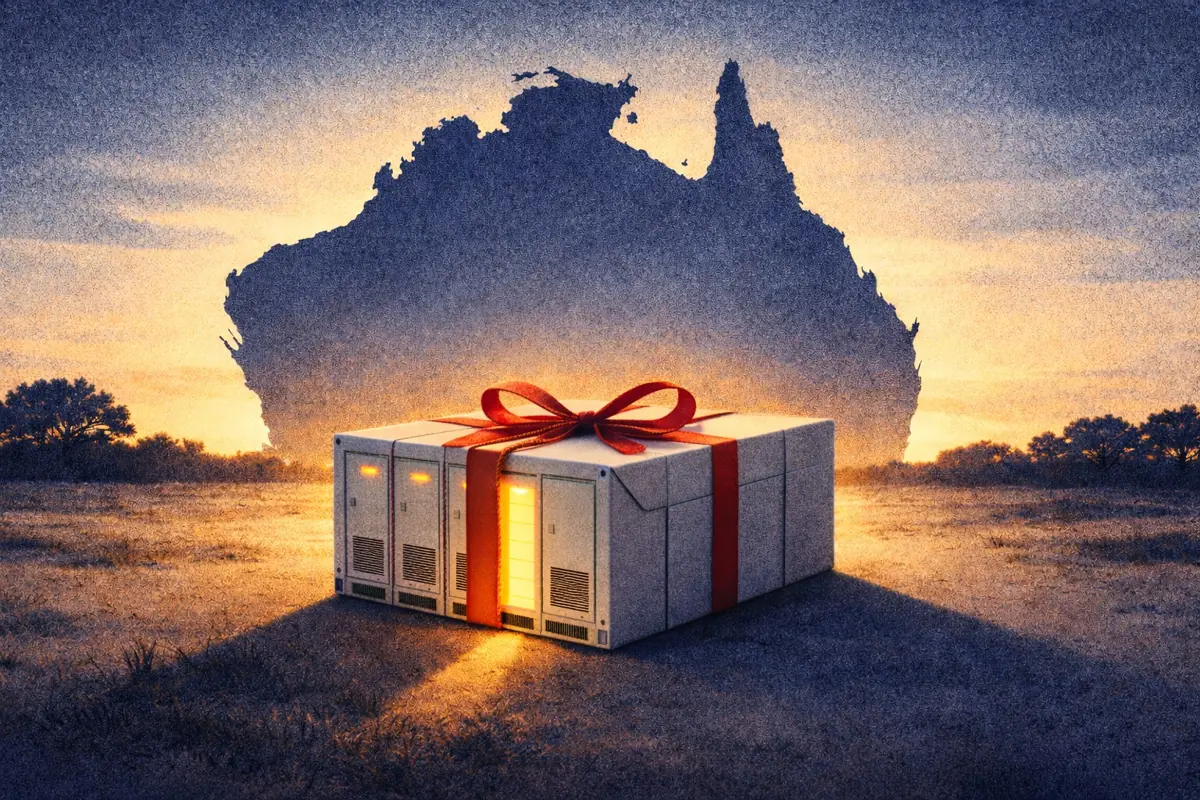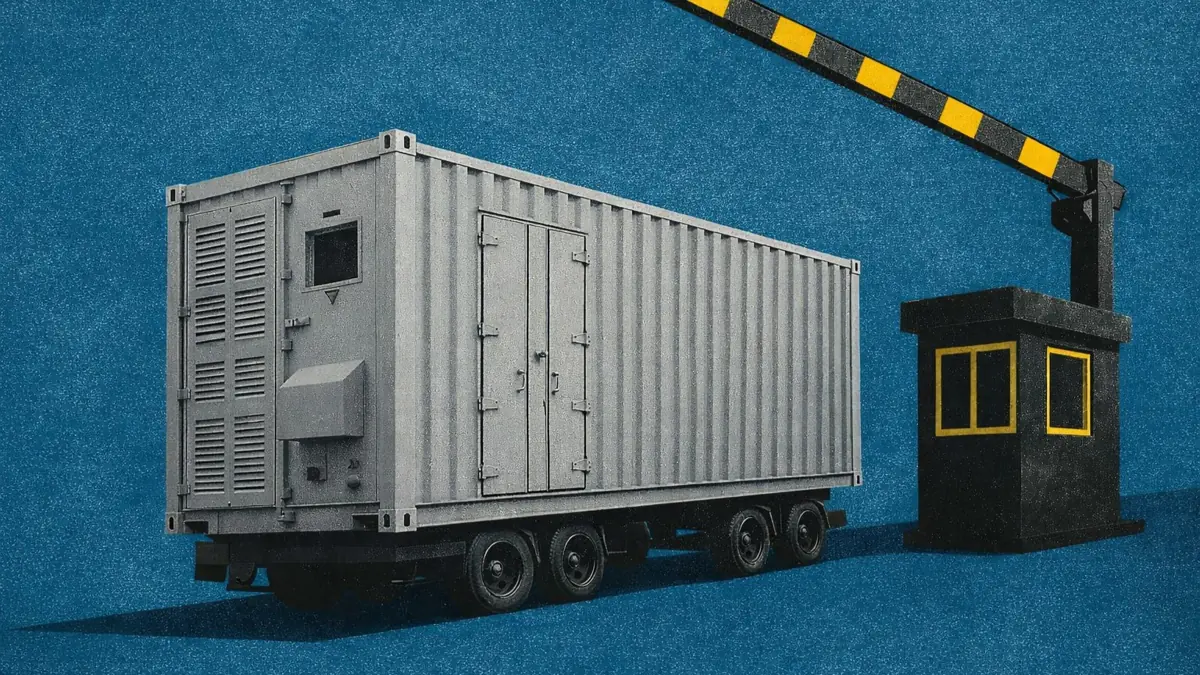NEM BESS Forecast: November 2025 release
The November 2025 version of the Modo Energy Battery revenue forecast for the NEM is now live. This release introduces new forecast features - solar co-location, cap contracts, and max annual cycling options are now available in the terminal.
Additionally, we have revised our assumptions for:
- Data centre demand;
- Generation build and retirement dates;
- Household battery capacity outlook;
- Commodity prices.
The ME NEM BESS index has been used to re-calibrate the forecast to reflect actual battery trading behaviour.
To find out more about the forecast, check out our methodology or book in a demo.
Executive summary:
New forecast features now available:
- Hybrid solar and storage (AC and DC-coupled);
- Option to include cap contract value in forecast revenues;
- Improved cycling optimisation using max annual cycles.
Input changes
- Consumer battery capacity to increase to 6GW by 2030, with corresponding increases in coordinated storage eroding some value for utility-scale storage.
- Large industrial load demand in South Australia doubles between 2029 and 2034. Overall demand up 8% by 2035 in this release compared to the last. This supports spreads in SA over the medium term.
- Data centre demand will increase by 4x by 2030, supporting spreads in the near term particularly in New South Wales.
- Lower commodity and LGC prices (down 2-6% for gas and coal and 45% for LGCs).
- Changes to thermal plant retirements, and delays in build completion dates of pumped hydro and new transmission.
New forecast features
The November 2025 release now supports several new features, including:
Hybrid solar and storage projects
Forecast runs now support both AC, and DC-coupled hybrid projects, where the model co-optimises battery and solar operations to maximise total site revenue.
Cap contracts
Cap contracts are a financial derivative that protect buyers from energy price volatility. When the wholesale price exceeds the strike price (typically $300/MWh), the seller returns the difference between the wholesale price and the strike to the buyer. In return for providing this insurance, the seller receives an upfront premium at the beginning of the quarter. This revenue stream helps smooth their quarterly cashflows and increases revenue certainty. Historically, this premium often exceeded the liability, making it profitable to sell cap contracts.
Batteries can be the ideal technology to defend caps because of their rapid response and flexible dispatch. Batteries typically dispatch during high-price events when caps are triggered. This allows them to cover their own liability through spot market revenue.
Users can now include the value of trading cap contracts in forecasts. This includes both cap premium (in $/MW) and the number of caps sold (in MW). The latter is calculated based on the duration of the modelled battery in relation to the duration of volatility events each quarter.
Maximum annual cycles improves battery dispatch decisions
Most battery warranties specify a maximum number of charge-discharge cycles per year, or an average number of cycles per day. We’ve replaced the forecast’s max daily cycles parameter with a max annual cycles parameter to better reflect these warranties. Cycles are optimised across the year based on this parameter, resulting in optimal revenue output.
FCAS islanding dynamics expected to positively impact revenues throughout 2026
Transmission line outages have caused significant FCAS earnings opportunities. Transmission outages were responsible for 19% of revenues since 2023 for batteries in Queensland, and 23% for batteries in South Australia. The forecast now simulates price spikes from FCAS islanding and extreme FCAS price events.
This lifts FCAS revenues in 2026, but from 2027 onwards the impact is negligible as a large BESS pipeline saturates these shallow markets (<100 MW of dispatch volume). Increased interconnection between regions, like Project EnergyConnect, also lowers the risk of islanding.
Data centre and mining investment trends lift demand by 10%
The surge in AI investment has made data centres and their energy use a key topic in future energy discussions. In FY25, data centres consumed 4TWh of energy, roughly 2.2% of total grid demand.
We’ve updated our data centre demand forecast to align with the latest Electricity Statement of Opportunities (ESOO), using the data centre scenario. In this scenario, data centre demand quadruples by 2030 and continues rising steeply through the mid-2030s to 2055.
South Australia will see the greatest demand growth, led by BHP’s recent $840 million investment in a series of mining projects at Olympic Dam. Industrial demand in South Australia is to double between 2029 and 2034, peaking at 7.8 TWh before plateauing.
Data centre buildout and mining increase total demand in the NEM by 8% in 2035. It’s projected to also increase further, landing at 10% higher in the 2040s.
Consumer battery growth has potential to reduce value for utility-scale storage
Consumer battery capacity in the NEM is set to almost triple to 6GW by 2030, following rapid uptake of the government’s Cheaper Home Batteries program. This launched on the 1st July 2025, subsiding the cost of home battery systems by 30%. Over 55,000 applications have been submitted according to the CER’s Q2 quarterly Carbon Market Report.
- New South Wales and Victoria - this doubles the current incentives for installation of a home battery system, for an average cost system.
- Queensland - the program replaces a previous incentive of $3,000-4,000 rebate for battery installations, which closed in May 2024.
- South Australia - this stacks with the existing $2,000 subsidy from the Home Battery Scheme.
This change gives consumers broader access to Virtual Power Plant (VPP) incentives nationwide - particularly in New South Wales, where the incentive to join a VPP doubled on 1 July. A growing share is expected to connect to VPPs to capture these benefits as more home batteries come online.
Australian commodity prices down, reflecting global trends
We are now using AEMO's final 2025 Inputs, Assumptions and Scenarios report (IASR) instead of the previous Draft 2 for plant level annual commodity prices. We’ve also refreshed our commodity prices for new builds.
Buildout and retirement timeframe changes in the near to medium term
Transmission and generation buildout and retirement timelines have been updated using NEM Generation Information and recent market announcements.
Transmission Company Victoria’s revised timeline places VNI West (Victoria - New South Wales, 1.9 GW) completion in late 2030, prompting us to assume a 2031 commissioning.
We have delayed commissioning of the Phoenix Pumped Hydro Project (New South Wales, 800 MW) from 2029 to 2031, with construction now set to begin in 2027 instead of 2025.
Several retirements have also shifted:
- Torrens Island B (South Australia, 800 MW OCGT) - retirement delayed from 2026 to mid-2028, following a SA government funding agreement with AGL to maintain energy security.
- Eraring (New South Wales, 1.4 GW Coal) - two of its four units now to retire in 2029 instead of 2027. We’ve taken this view amid ongoing uncertainty over Origin Energy’s extension discussions with the NSW Government.
- Gladstone (Queensland, 1.6 GW Coal) - while CS Energy has announced a potential 2029 closure, we anticipate possible government intervention. Accordingly, we project two of six units retiring in 2032 and the remainder in 2035.
Finally, we have refreshed the BESS pipeline using the latest data from the Modo Energy Asset Database.







